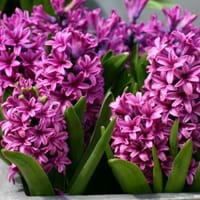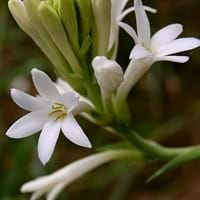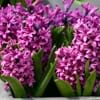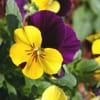Color
Blue, Orange, Pink, Purple, Red, White, Yellow
Pink, White, Yellow
Color Meaning
Blue - Peace and Serenity, Orange - Satisfaction and Passion, Pink - Sensitivity and Love, Purple - Elegance and Pride, Red - Courage, Desire and Love, White - Purity and Innocence, Yellow - Happiness and Friendship
Pink - Sensitivity and Love, White - Purity and Innocence, Yellow - Happiness and Friendship
Fragrance
Floral
Aromatic
Line
Not Available
Not Available
Silhouette
Not Available
Not Available
Blossom Texture
Not Available
Not Available
Form
Not Available
Not Available
Sunlight
Full Sun, Part Sun
Full Sun
Type of Soil
Loamy
Well-drained, Sandy
Essential Fertilizers
Lime stone
Lime stone, Nitrogen
Common Pests and Diseases
List of Pests
Aphids
Aphids, Mites, Thrips
List of Diseases
Gray Molds
Nematodes, Stem Rot
Bloom Time
Spring Season
Late-Summer Season, Mid-Summer Season
Origin
Iran, Iraq, Mediterranean Region, Turkmenistan
Mexico
Interesting Facts of
- Unattached to the bottom, Water Hyacinths are the only large aquatic plants that float on the water.
- They float on water by the bubbles trapped by roots and air spaces in the leaf stalks.
- Tuberose flower blooms only at night and it is the only time when it is active. Due to this these are also called as “Night Queen”, “Mistress of the Night”, or “Raat ki Raani” in Hindi.
- In Hawaiian weddings, it is a tradition for the bride to wear a Tuberose wreath.
.
Lifespan
Perennials - a plant that lives for three or more years
Perennials - a plant that lives for three or more years
Flower Meaning
Not Available
Astrological Flower
Not Available
Birth Month Flower
Not Available
Flower Availability
Not Available
Uses
Not Available
Not Available
Health Benefits
improves the functioning of the lungs, kidneys, and stomach, Regulates the Menstruation cycle
Good remedy for Diarrhea, Prevents Intestinal Ulcers
Medicinal Uses
Acts as an anti-inflammatory, It is Antibacterial, Unknown
Acts as a antidepressant, Acts as a antispasmodic, Acts as an anti-inflammatory
Culinary Uses
Used in salads, soups and sandwiches
Used in salads, soups and sandwiches
Design Uses
Not Available
Cosmetic Uses
Good for Hair growth, Lightens the skin, Softens skin, Used in Perfumes
Used in Perfumes, Utilized in making essential oils
Occasional Uses
Birth Day, Decoration, Wedding
Decoration, Wedding
Allergy
dry or cracked skin, Itching
NA
Common Name
Not Available
Scientific Name
Hyacinthus
Polianthes tuberosa
Sub kingdom
Tracheobionta
Tracheobionta
Super Division
Spermatophyte
Spermatophyte
Division
Magnoliophyta
Magnoliophyta
Order
Liliales
Asparagales
Class
Liliopsida
Magnoliopsida
Family
Pontederiaceae
Asparagaceae
Sub Family
Scilloideae
Agavoideae
Genus
Not Available
Not Available
Number of Species
Not Available
Not Available
More about Hyacinth and Tuberose Facts and color
You must be curious to know more about Hyacinth and Tuberose facts and color. flowers.comparespecies.com will let you know all the Interesting Facts about Hyacinth and Tuberose. Hyacinth comes in Blue, Orange, Pink, Purple, Red, White, Yellow colors whereas Tuberose flowers are with Pink, White, Yellow colors. Other Hyacinth and Tuberose facts will definitely amuse you.
Hyacinth and Tuberose growing conditions
Absolute growing condition is the only key to keep plants in good health and in good shape. Let’s learn about essential Hyacinth and Tuberose growing conditions. Hyacinth requires Full Sun, Part Sun and Enough watering with 6.50 of Loamy soil. Tuberose needs Full Sun and Enough watering with 6.50 of Well-drained, Sandy soil. Get other Hyacinth and Tuberose facts in the sections below.
Hyacinth and Tuberose Facts
Want to know about Hyacinth and Tuberose facts? Get all the Hyacinth and Tuberose facts here.
Hyacinth and Tuberose Classification
After knowing about various Hyacinth and Tuberose facts, let's study their classification. Based on genetic and physical features, Hyacinth and Tuberose classification starts with knowing their scientific name. The scientific name of Hyacinth and Tuberose is Hyacinthus and Polianthes tuberosa respectively. Hyacinth belongs to Pontederiaceae family whereas Tuberose falls under Asparagaceae family. Also check out Flowers by Color so as to plant colorful aroma in the garden.





